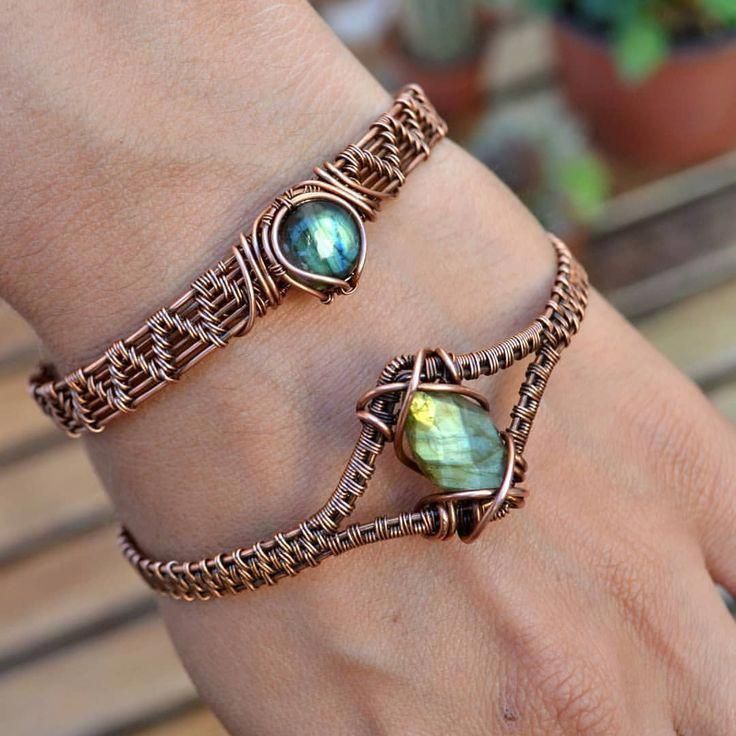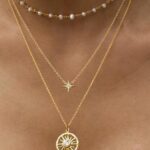Diamond jewelry has always held a special allure and fascination, captivating individuals with its timeless beauty and undeniable sparkle. From engagement rings to elaborate necklaces, diamonds have been cherished for their elegance and symbolism throughout history. However, what many may not realize is that there is more to diamond jewelry than meets the eye. Beyond their breathtaking appearance, diamonds also hold hidden secrets in the form of diamond dust.
Diamond dust, also known as diamond powder or diamond grit, refers to the small particles or powder derived from diamonds. This fine substance plays a crucial role in enhancing the beauty and brilliance of diamond jewelry. As we delve into the world of diamond dust, we will explore its historical significance, modern applications, unique design techniques, maintenance and care tips, and much more.
To truly understand the impact of diamond dust in jewelry, it is essential to delve into its origins and historical significance. Throughout centuries and civilizations, these precious particles have been treasured by ancient cultures for their spiritual symbolism and believed healing properties. It is fascinating to trace the use of diamond dust in jewelry back to ancient times when it was used not only for adornment but also as an essential tool for polishing, cutting, and engraving precious gemstones.
In today’s modern era, the applications of diamond dust in jewelry have expanded exponentially. From enhancing the sparkle of diamonds to creating cutting-edge design techniques and even potential industrial uses within the industry itself; diamond dust continues to be a versatile resource that contributes to the artistry of jewelry-making.
As we journey through this article exploring the world of diamond dust used in jewelry, prepare to be amazed by its multifaceted nature and discover how it adds an extra layer of intricacy to our beloved gemstones.
Defining Diamond Dust
Diamond dust, also known as diamond powder, is a term used to describe the minute particles or powder that is derived from diamonds. It is created through various processes such as crushing, grinding, and polishing diamonds.
These processes result in the formation of extremely fine particles that are typically between 1 to 600 microns in size. While the term “dust” may imply a lack of value or worth, diamond dust is highly prized in the jewelry industry for its unique properties and uses.
One key aspect of diamond dust is its exceptional hardness. Diamonds have a Mohs hardness scale rating of 10, which makes them one of the hardest materials known to man. This incredible hardness contributes to the effectiveness and versatility of diamond dust in jewelry applications.
Due to its hardness, diamond dust is often used in polishing and cutting tools for diamonds themselves. Its abrasive nature allows craftsmen to create precise facets and finishes on diamonds. Additionally, diamond dust can be used for engraving intricate patterns on various jewelry pieces.
Moreover, the small particle size of diamond dust grants it unique optical properties that enhance the sparkle and brilliance of diamonds when used in jewelry settings. The tiny particles disperse light effectively and create an impressive display of fire and scintillation. Jewelry designers utilize this quality by incorporating diamond dust into different pieces such as rings, necklaces, bracelets, and earrings to increase their visual appeal.
Historical Significance
Diamond dust has a rich historical significance in jewelry, with its origins dating back centuries. Ancient cultures recognized the beauty and sparkle of diamonds and sought ways to capture their brilliance in their jewelry designs. Diamond dust played a significant role in achieving this timeless allure.
Origins of Diamond Dust
The use of diamond dust in jewelry can be traced back to ancient civilizations such as Egypt, Rome, and India. These cultures discovered the technique of grinding diamonds into powder, creating what is now known as diamond dust. This fine powder was highly prized for its ability to add a shimmering effect to various jewelry pieces.
In ancient Egypt, diamond dust was used to create stunning engravings on jewelry, giving them an intricate and eye-catching design. The Romans, on the other hand, utilized diamond dust as a polishing agent for their gemstones, enhancing the brilliance and luster of their jewelry. In India, diamond dust was incorporated into resin techniques called “kundan” and “meenakari,” where it was mixed with gold or enamel to create intricate patterns and designs.
Symbolism and Status
Ancient cultures also assigned symbolic meaning to diamonds and diamond dust. In many societies, diamonds were associated with power, wealth, and prosperity. The use of diamond dust in jewelry was seen as a status symbol because it required great effort and skill to grind diamonds into such fine particles.
Diamond dust symbolized luxury and elegance, adorning the attire of royalty and nobility. It conveyed not only the economic status but also served as amulets for protection against evil spirits or illness.
Furthermore, ancient cultures believed that wearing jewelry containing diamond dust could bring good fortune, enhance clarity of thought, promote spiritual well-being, and even provide healing properties. These beliefs further added to the appeal and significance of diamond dust in ancient jewelry.
Overall, understanding the historical significance of diamond dust in jewelry provides valuable insights into the enduring fascination for these sparkling gemstones. The techniques and symbolism associated with diamond dust have been passed down through generations, contributing to the continued allure and prestige of diamond jewelry in modern times.
Modern Applications
Diamond dust, also known as diamond powder, has a wide range of modern applications in the jewelry industry. One of the primary uses of diamond dust is in the polishing, cutting, and engraving of diamonds themselves. Due to its hardness and abrasive properties, diamond dust is perfect for refining the facets and surfaces of diamonds to maximize their brilliance and sparkle. It is used by skilled craftsmen and jewelers to ensure that every diamond meets the highest standards of quality.
In addition to enhancing the beauty of diamonds, diamond dust also plays a crucial role in other jewelry-making processes. For instance, it can be used to polish precious metals like gold or platinum, creating a stunning mirror-like finish that complements the brilliance of gemstones. Diamond dust is applied using specialized tools and techniques to achieve precision results.
Moreover, diamond dust is sometimes incorporated into coatings or as an additive in jewelry resin techniques. This innovative approach allows designers to add a touch of sparkle or create unique textures on various jewelry pieces. By strategically incorporating this shimmering powder into different materials, jewelers can produce eye-catching and one-of-a-kind designs that stand out from traditional styles.
| Application | Use |
|---|---|
| Polishing Diamonds | To refine facets and surfaces for maximum sparkle |
| Cutting Diamonds | To shape diamonds with precision |
| Engraving Diamonds | To add intricate patterns or personalization to diamonds |
| Polishing Metals | To create a mirror-like finish on gold or platinum jewelry |
| Coating Techniques | To add sparkle or texture in resin or coating applications |
Enhancing Sparkle
Introduction
Diamonds are beloved for their captivating sparkle and brilliance, making them the ultimate symbol of elegance and luxury in jewelry. However, what may be less well-known is the pivotal role that diamond dust plays in enhancing the dazzling appearance of these precious gemstones. In this section, we will delve into how diamond dust is used to elevate the sparkle and brilliance of diamonds in a wide array of jewelry pieces such as rings, necklaces, and earrings.
Microscopic Reflections
One of the primary ways diamond dust enhances the sparkle of diamonds is by creating microscopic reflections that scatter light in all directions. As light enters a diamond, it undergoes multiple reflections within the stone due to its high refractive index.
These internal reflections create an optical phenomenon known as “fire” – bursts of vibrant colors that dance within the gemstone when it catches the light. Diamond dust, when strategically applied to jewelry pieces, serves as tiny mirrors that enhance these internal reflections and amplify the fire effect.
Pavé Setting Technique
Diamond dust also plays a crucial role in the pavé setting technique used extensively in jewelry design. With this technique, small diamonds or diamond chips are set closely together on a piece of jewelry, creating an enchanting surface studded with sparkling gems.
To achieve this effect, jewelers use diamond dust to fill any gaps between stones during setting. This not only ensures a flawless and cohesive appearance but also maximizes the reflection of light among each individual diamond, resulting in an intensified sparkle.
Additionally, when it comes to fancy colored diamonds or even other gemstones like sapphires or rubies, diamond dust can act as a complementary element by accentuating their natural hues through its reflective properties. By incorporating diamond dust into specific areas surrounding these colored stones or encrusting them with fine particles, designers can create mesmerizing contrasts that highlight the brilliance and color play of all gemstones.
Industrial Uses
Diamond dust has a range of industrial uses in the jewelry industry, beyond its aesthetic appeal. The incredible hardness and durability of diamond dust make it an ideal material for creating high-precision tools and machinery used in the production of jewelry.
One of the primary industrial uses of diamond dust is in diamond cutting and polishing tools. Diamond dust is incorporated into grinding wheels, saw blades, and drill bits used to cut and shape diamonds with precision. The sharpness and abrasive properties of diamond dust make it highly effective at grinding away excess material and refining the shape of the diamond.
Moreover, diamond dust is also used in the creation of molds and dies used in jewelry manufacturing processes such as casting or stamping. By adding diamond powder to these molds and dies, their durability and lifespan are significantly increased due to the hardness of the diamonds. This ensures consistent quality during mass production and allows for intricate detailing in jewelry designs.
Another important application is in setting techniques. Jewelers use diamond drilling equipment that incorporates diamond dust to create holes or channels in various materials like metal or gemstones. These holes are crucial for securing stones or metal components together seamlessly, allowing for intricate designs without compromising structural integrity.
In addition to these industrial applications, researchers are continuously exploring new ways to utilize diamond dust’s unique properties in innovative technology advancements within the jewelry industry. For example, nanodiamonds made from ultra-fine diamond particles are being researched for their potential use in biomedical implants, as they have a low friction coefficient that can reduce wear on soft tissues.
Overall, the industrial uses of diamond dust highlight its versatility as a material beyond its traditional role as an adornment in jewelry pieces. Its exceptional hardness, durability, and precision-cutting capabilities make it a valuable component in high-precision tools and machinery that drive the production process forward while maintaining quality standards.
Sustainability and Ethics
Diamond jewelry has long been revered for its beauty, elegance, and timeless appeal. However, in recent years, there has been a growing awareness surrounding the environmental and ethical implications of the diamond industry. This has led to increased scrutiny on the use of diamond dust in jewelry and a push towards more sustainable sourcing and responsible manufacturing practices.
Environmental concerns are at the forefront when it comes to diamond mining and processing. Traditional methods of diamond extraction can have a significant impact on ecosystems, including deforestation, soil erosion, and water pollution. Additionally, the energy-intensive nature of diamond mining contributes to greenhouse gas emissions, further exacerbating climate change.
In an effort to address these concerns, many companies within the diamond industry are implementing sustainable practices. This includes utilizing more efficient mining techniques that minimize environmental impacts and reduce carbon footprints. Some companies also prioritize reforestation efforts in areas affected by mining activities to restore ecosystems.
Ethical considerations also come into play when discussing diamond dust in jewelry. The issue of conflict diamonds or “blood diamonds” has gained significant attention over the years. These are diamonds that have been mined under conditions involving human rights abuses or financing armed conflicts.
To combat the issue of conflict diamonds, organizations like the Kimberley Process Certification Scheme have been established to ensure that diamonds are sourced responsibly from conflict-free areas. This certification process requires rigorous tracking and tracing systems for diamonds throughout the supply chain, providing consumers with reassurance that their jewelry is ethically sourced.
Unique Design Techniques
Diamond dust not only enhances the sparkle and brilliance of diamonds but also offers unique design possibilities in the creation of jewelry. One innovative technique is using diamond dust as a decorative element in resin jewelry. Resin is a versatile material that can be shaped into various forms, including pendants, earrings, and bracelets. By incorporating diamond dust into the resin mixture, jewelry designers can create pieces that have a captivating sparkle and an added touch of luxury.
Coating techniques are another popular method for incorporating diamond dust into jewelry designs. Thin layers of diamond dust can be carefully applied to the surface of jewelry items to create a shimmering effect.
This technique is commonly used on rings and pendants, where the small particles of diamond dust catch the light and reflect it back with exquisite brilliance. The coating can be applied in patterns or sprinkled across the surface to create different effects, adding depth and dimension to the piece.
These innovative design techniques not only add visual appeal but also offer a way to make use of smaller or lower-quality diamonds that may not have been suitable for traditional settings. By incorporating diamond dust into resin or coating techniques, these smaller diamonds can still contribute their beauty and sparkle to create unique and eye-catching jewelry pieces.
Jewelry designers continue to explore new ways to incorporate diamond dust into their creations, pushing the boundaries of traditional designs. From intricate patterns created by embedding small fragments of diamonds into resin molds to experimenting with different sizes and shapes of diamond particles in coating applications, these design techniques offer endless possibilities for creating one-of-a-kind pieces that showcase the mesmerizing beauty of both diamonds and diamond dust.
Maintenance and Care
Maintenance and Care:
Proper maintenance and care are essential for ensuring the longevity and dazzling appearance of diamond jewelry that incorporates diamond dust. While diamonds are known for their durability, they still require regular upkeep to ensure they continue to shine brightly. Here are some tips and guidelines to help you maintain your diamond jewelry:
First and foremost, it is important to handle diamond jewelry with care. Diamonds are extremely hard, but they can still chip or scratch if mishandled. When putting on or taking off your jewelry, it is best to do so over a soft surface or towel to prevent any accidental drops or impacts.
Regular cleaning is also crucial in maintaining the sparkle of diamond jewelry. You can clean your diamond pieces at home by creating a gentle solution of warm water mixed with mild dish soap. Soak your jewelry in this solution for about 20-30 minutes, then gently scrub it with a soft toothbrush to remove any dirt or residue. Rinse the piece thoroughly under running water and pat it dry with a lint-free cloth.
To protect the setting and diamonds from damage, avoid wearing your diamond jewelry when engaging in activities such as exercising, swimming, or doing household chores. Chemicals found in certain cleaning products or chlorine in pools can erode metals and potentially loosen the settings of your diamonds.
Regular inspections by a professional jeweler are recommended to ensure that all settings are secure and there are no signs of wear or damage. A jeweler will be able to assess any potential issues and make any necessary repairs promptly.
Lastly, proper storage is vital for protecting your diamond jewelry when it is not being worn. Store each piece separately in a fabric-lined jewelry box or pouch to prevent scratching against other gemstones or metal surfaces. Consider using dividers or compartments within the storage container to keep delicate pieces separate from one another.
By following these maintenance and care guidelines, you can extend the life of your diamond jewelry that incorporates diamond dust and keep it looking radiant for years to come. Remember, regular cleaning, careful handling, professional inspections, and proper storage are key to maintaining the beauty and allure of your precious diamond jewelry.
Conclusion
In conclusion, diamond dust plays a crucial role in the world of jewelry, fulfilling both practical and aesthetic purposes. Throughout this article, we have explored the various facets of diamond dust and its significance in the industry.
From its historical origins to its modern applications, diamond dust has remained an essential component in enhancing the sparkle and brilliance of diamonds. We have seen how it is used not only for polishing, cutting, and engraving diamonds but also in innovative design techniques that create unique jewelry pieces.
Moreover, diamond dust holds promise beyond its decorative aspects. Its potential industrial uses demonstrate its versatility in the creation of high-precision tools and machinery used in jewelry production.
As we continue to move toward a more sustainable and ethical approach to jewelry manufacturing, efforts are being made to ensure responsibly sourced diamond dust. These considerations aim to protect the environment while also supporting fair trade practices within the industry.
In summary, diamond dust serves as a remarkable material that adds depth and enchantment to jewelry pieces. Whether it is enhancing the brilliance of diamonds or providing captivating design possibilities, it continues to captivate jewelers and inspire creativity. As you adorn yourself with diamond dust jewelry, remember to follow proper maintenance and care guidelines to preserve its beauty for years to come.
Frequently Asked Questions
What do jewelers do with diamond dust?
Jewelers often use diamond dust in a variety of ways. One common use is in the process of cutting and shaping diamonds. Diamond dust is a very fine abrasive material that can be mixed with a lubricant to create a grinding paste.
This paste is then applied to diamond-tipped tools, such as saw blades or grinding wheels, to help them effectively cut or shape diamonds and other hard gemstones. The abrasive nature of diamond dust allows jewelers to achieve precise cuts and smooth finishes on gemstones.
Does diamond dust have value?
Yes, diamond dust does have value in certain industries. While it may not have the same level of value as larger diamonds, which are valued based on their rarity and overall quality, diamond dust is still a valuable resource due to its unique properties.
Its exceptional hardness and abrasive qualities make it an ideal material for various industrial applications, including cutting, polishing, and grinding operations. Companies involved in these industries often purchase diamond dust for use in manufacturing processes where precision and durability are crucial.
Is diamond dust used for polishing other diamonds?
Indeed, diamond dust is commonly used for polishing other diamonds within the jewelry industry. Polishing plays a vital role in enhancing the appearance of diamonds by improving their brilliance, symmetry, and overall visual appeal. To achieve this desired result efficiently, jewelers typically utilize diamond powder or dust as an abrasive agent during the polishing process.
The extremely hard particles of diamond dust work to remove imperfections or scratches from the surface of diamonds while ensuring minimal damage or loss of weight from the gemstone being polished. This technique helps maximize the fire and sparkle of finished diamonds before they are set into jewelry pieces such as rings or necklaces.

Welcome to my jewelry blog! My name is Sarah and I am the owner of this blog.
I love making jewelry and sharing my creations with others.
So whether you’re someone who loves wearing jewelry yourself or simply enjoys learning about it, be sure to check out my blog for insightful posts on everything related to this exciting topic!





